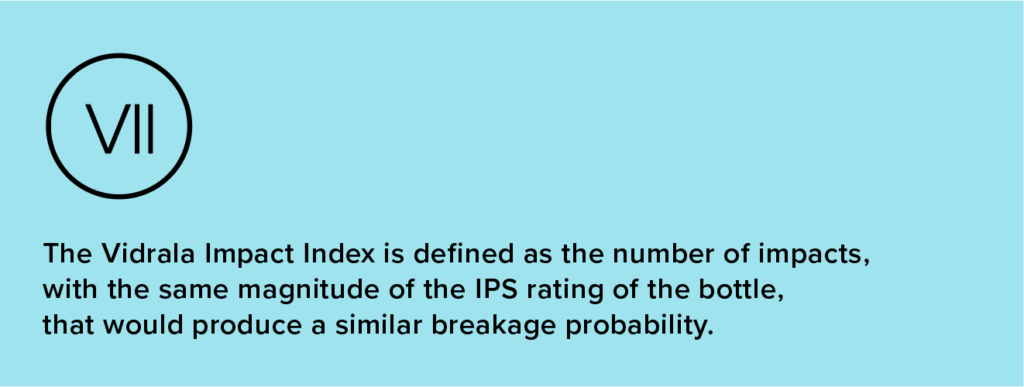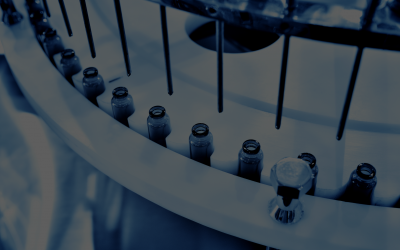VII is set to become an important measurement for glass packaging operations.
A useful measurement tool to rate a line’s impact performance, VII is defined as the number of impacts, with the same magnitude of the IPS rating of the bottle, that would produce a similar breakage probability.
The idea behind the VII index is based on two main principles:
• From experience, after testing containers which had been previously proven weak at low impact levels, 20 IPS is the minimum required impact level in order to break a bottle with the Impact Tester. Impacts below 15 IPS are already extremely weak and should be considered normal handling and are not included in the calculation.
• For a given impact, we can calculate how many impacts of a predetermined reference intensity would exhibit the same breakage probability. The equivalent figure for multiple impacts would be obtained by adding up the individual equivalence factors for each impact.
Considering these principles, the IPS rating of the bottle is the reference number used to characterize impact severity. When the bottle IPS rating is not known, a value of 20 IPS can be used as a good reference.
Defining VII

More about the Index:
The Vidrala Impact Index represents the number of impacts, with the same IPS rating of the bottle, that would produce a similar breakage probability. As an example, if the Vidrala Impact Index of a line is 22, that means that all the impacts received by the glass bottle during filling, would cause the same increase in the probability of breakage of that bottle than being hit 22 times by an impact with a magnitude equal to the bottle’s IPS rating.
This index can be calculated to both individual or multiple impacts. For multiple impacts the individual impact indexes are added up to obtain the overall index.
It is also recommended to establish a minimum threshold for relevant impacts to be included in the calculation. The reason for this is that a very large number of them could not be considered independent from each other any more. The overall contribution of these weakest impacts should be considered negligible. We recommend to use 15 IPS as the minimum impact magnitude to be considered.
CONSIDERATIONS
It should be noted that there are some considerations that could mislead in the interpretation of results:
- The correlation between accelerations and IPS is valid when the received impact can be considered of a similar type as the one performed in the impact tester. This requires that at least one of the impacting objects is static.
- At certain stages of the filling line other types of impacts can occur, especially in the final packaging stages where the bottles are already in the box ready to be palletized. Within the boxes, bottles appear to have more freedom of movement which provokes a higher acceleration when an impact occurs. Consequently, impact readings will show higher values for these cases.
- In order to deal with this drawback, our recommendation is to use some minoring factor to be applied directly to measured impact speeds prior to computing the Vidrala Impact Index value. The determination of this factor should be based on achieving consistent correlations between the obtained Impact Indexes and the failures rates at each stage.
- So far, we cannot provide a specific value for this, since we don’t have enough data and in our experience different machines, in different lines, will have different values. However, from our experience in different filling lines, the impact values measured in the palletiser and other machines (fillers, labellers) are in most cases the highest ones in the run and their IPS value should be reduced before being used in the Vidrala Impact Index.

As a final consideration it is important to consider that not all the bottles suffer the same set of impacts. To have a representative Vidrala Impact Index value for the filling line or a stage of it, it is advised to perform three runs as a minimum and finally averaging their values.





